-
 Bitcoin
Bitcoin $106,754.6083
1.33% -
 Ethereum
Ethereum $2,625.8249
3.80% -
 Tether USDt
Tether USDt $1.0001
-0.03% -
 XRP
XRP $2.1891
1.67% -
 BNB
BNB $654.5220
0.66% -
 Solana
Solana $156.9428
7.28% -
 USDC
USDC $0.9998
0.00% -
 Dogecoin
Dogecoin $0.1780
1.14% -
 TRON
TRON $0.2706
-0.16% -
 Cardano
Cardano $0.6470
2.77% -
 Hyperliquid
Hyperliquid $44.6467
10.24% -
 Sui
Sui $3.1128
3.86% -
 Bitcoin Cash
Bitcoin Cash $455.7646
3.00% -
 Chainlink
Chainlink $13.6858
4.08% -
 UNUS SED LEO
UNUS SED LEO $9.2682
0.21% -
 Avalanche
Avalanche $19.7433
3.79% -
 Stellar
Stellar $0.2616
1.64% -
 Toncoin
Toncoin $3.0222
2.19% -
 Shiba Inu
Shiba Inu $0.0...01220
1.49% -
 Hedera
Hedera $0.1580
2.75% -
 Litecoin
Litecoin $87.4964
2.29% -
 Polkadot
Polkadot $3.8958
3.05% -
 Ethena USDe
Ethena USDe $1.0000
-0.04% -
 Monero
Monero $317.2263
0.26% -
 Bitget Token
Bitget Token $4.5985
1.68% -
 Dai
Dai $0.9999
0.00% -
 Pepe
Pepe $0.0...01140
2.44% -
 Uniswap
Uniswap $7.6065
5.29% -
 Pi
Pi $0.6042
-2.00% -
 Aave
Aave $289.6343
6.02%
Is it a buying point if the price does not break after breaking through the previous high? How to confirm?
A breakout that holds above previous resistance without a breakdown suggests strong buying interest, signaling a potential bullish trend continuation.
Jun 17, 2025 at 01:22 pm
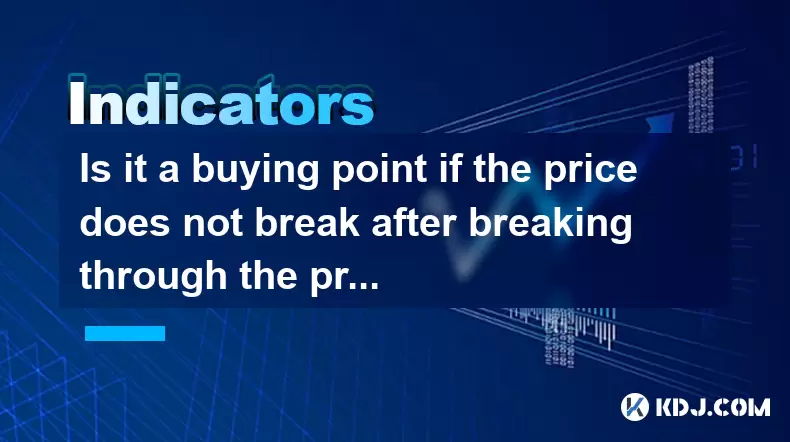
Understanding Price Behavior After Breaking Previous Highs
When analyzing cryptocurrency price charts, traders often look for breakouts as potential signals for new trends. A common question among traders is whether a non-breakdown after breaking through a previous high indicates a buying opportunity. To answer this, it's essential to understand the psychology behind such price behavior.
In many cases, when an asset breaks above a significant resistance level — represented by a prior high — and then stabilizes without falling below that level, it suggests strong buying interest. This type of behavior can be interpreted as a successful breakout, where the old resistance now acts as new support. If the price remains above that level and forms higher lows, it may signal the start of a new uptrend.
Key Concept: Resistance turning into support is a critical technical analysis principle that confirms the validity of a breakout.
However, not all breakouts are genuine. Sometimes, the market will create a "false breakout" where the price briefly moves above a key level but quickly reverses. Traders need to distinguish between real and fake breakouts to avoid entering positions prematurely.
How to Confirm a Valid Breakout in Cryptocurrency Markets
To determine if a breakout is valid, traders should examine several factors:
- Volume Confirmation: A legitimate breakout typically comes with a surge in trading volume. Higher-than-average volume during the breakout suggests institutional or large-scale participation.
- Price Retest: After breaking through a previous high, the price often retests the broken level. If it holds above that level without closing significantly below, it strengthens the breakout's credibility.
- Candlestick Structure: The nature of the candles during and after the breakout matters. Strong bullish candles following the breakout suggest momentum is intact.
Additionally, using moving averages like the 50-day or 200-day EMA (Exponential Moving Average) can help assess whether the breakout aligns with the broader trend. If the price remains above these key levels post-breakout, it reinforces the bullish case.
Identifying Buying Opportunities Post-Breakout
Once a breakout is confirmed, traders often seek entry points to capitalize on the new trend. One popular method is the pullback strategy, where traders wait for the price to retrace toward the breakout level before entering long positions.
Here’s how to execute this strategy effectively:
- Wait for a Pullback: After a successful breakout, monitor the price action for a retracement toward the former resistance-turned-support.
- Check for Confluence: Look for additional technical indicators, such as Fibonacci retracement levels or RSI (Relative Strength Index), to confirm oversold conditions or trend strength.
- Use Tight Stop Loss: Place stop losses just below the breakout level to manage risk while giving the trade room to breathe.
This approach allows traders to enter at more favorable prices while still participating in the ongoing trend.
Using Indicators to Validate Post-Breakout Strength
Technical indicators play a crucial role in confirming the strength and sustainability of a breakout. Among the most useful tools are:
- RSI (Relative Strength Index): An RSI value above 50 indicates bullish momentum. If the indicator maintains this level after a breakout, it supports the continuation of the uptrend.
- MACD (Moving Average Convergence Divergence): A bullish MACD crossover following a breakout can serve as a secondary confirmation of trend strength.
- Volume Profile: Analyzing volume at price levels helps identify areas where significant buying occurred during the breakout.
By combining multiple indicators, traders can reduce false signals and increase the probability of successful trades.
Common Mistakes to Avoid When Trading Breakouts
Even experienced traders can fall into traps when dealing with breakouts. Here are some pitfalls to watch out for:
- Chasing the Price: Entering a trade too late after a breakout can lead to poor risk-reward ratios and increased slippage.
- Ignoring Timeframes: A breakout on a lower timeframe might not hold significance unless confirmed on higher timeframes like the 4-hour or daily chart.
- Overlooking Market Context: External factors such as macroeconomic news or sector-specific developments can impact breakout reliability.
Avoiding these mistakes ensures traders make informed decisions based on solid technical analysis rather than emotional impulses.
Frequently Asked Questions
What is the significance of a failed breakdown after a breakout?
A failed breakdown means the price did not return below the broken resistance level. This usually indicates that buyers have taken control, reinforcing the breakout's validity and increasing the likelihood of continued upward movement.
Can I use candlestick patterns to confirm a breakout?
Yes, certain candlestick formations like bullish engulfing patterns or hammer candles near the breakout level can act as confirmation signals. These patterns suggest strong buying pressure and potential trend continuation.
Is it necessary to use both volume and price action for confirmation?
While either volume or price action alone can offer insights, combining both provides a more robust confirmation. Volume validates the strength behind price movements, making it a critical factor in assessing breakout quality.
How do I differentiate between a real breakout and a fake one?
Fake breakouts often lack volume, fail to sustain above the broken level, and show immediate reversal patterns. Real breakouts exhibit strong follow-through, higher volume, and price stabilization above key levels.
Disclaimer:info@kdj.com
The information provided is not trading advice. kdj.com does not assume any responsibility for any investments made based on the information provided in this article. Cryptocurrencies are highly volatile and it is highly recommended that you invest with caution after thorough research!
If you believe that the content used on this website infringes your copyright, please contact us immediately (info@kdj.com) and we will delete it promptly.
- 2025-W Uncirculated American Gold Eagle and Dr. Vera Rubin Quarter Mark New Products
- 2025-06-13 06:25:13
- Ruvi AI (RVU) Leverages Blockchain and Artificial Intelligence to Disrupt Marketing, Entertainment, and Finance
- 2025-06-13 07:05:12
- H100 Group AB Raises 101 Million SEK (Approximately $10.6 Million) to Bolster Bitcoin Reserves
- 2025-06-13 06:25:13
- Galaxy Digital CEO Mike Novogratz Says Bitcoin Will Replace Gold and Go to $1,000,000
- 2025-06-13 06:45:13
- Trust Wallet Token (TWT) Price Drops 5.7% as RWA Integration Plans Ignite Excitement
- 2025-06-13 06:45:13
- Ethereum (ETH) Is in the Second Phase of a Three-Stage Market Cycle
- 2025-06-13 07:25:13
Related knowledge
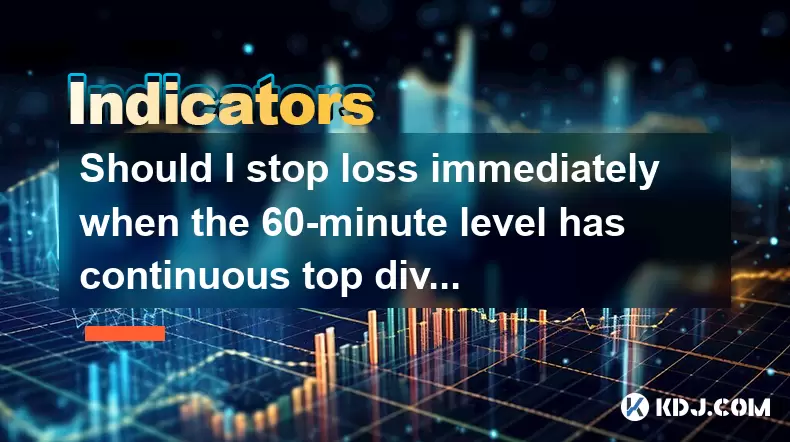
Should I stop loss immediately when the 60-minute level has continuous top divergence?
Jun 17,2025 at 05:28pm
Understanding Top Divergence in the 60-Minute ChartIn cryptocurrency trading, top divergence refers to a technical signal where the price of an asset makes higher highs while the indicator (often RSI or MACD) makes lower lows. This is commonly interpreted as a sign of weakening momentum and potential reversal. When this occurs on the 60-minute chart, it...
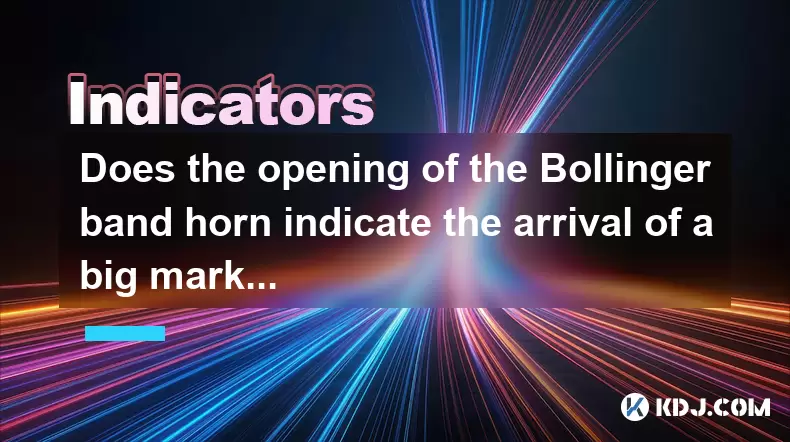
Does the opening of the Bollinger band horn indicate the arrival of a big market?
Jun 17,2025 at 06:28pm
Understanding the Bollinger Bands and Their StructureBollinger Bands are a widely used technical analysis tool in the cryptocurrency market, developed by John Bollinger. They consist of three lines: a simple moving average (SMA), typically set at 20 periods, and two standard deviation bands above and below this SMA. These bands dynamically expand and co...
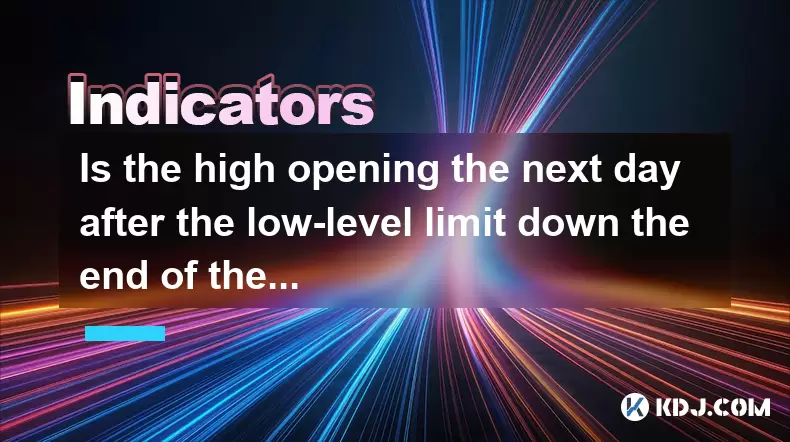
Is the high opening the next day after the low-level limit down the end of the wash?
Jun 17,2025 at 05:57pm
Understanding the Concept of a Limit Down and Its ImplicationsIn the world of cryptocurrency trading, a limit down refers to a situation where the price of a digital asset drops sharply, reaching its maximum allowable decline within a specific time frame. This mechanism is often seen on exchanges that implement daily price limits to prevent excessive vo...
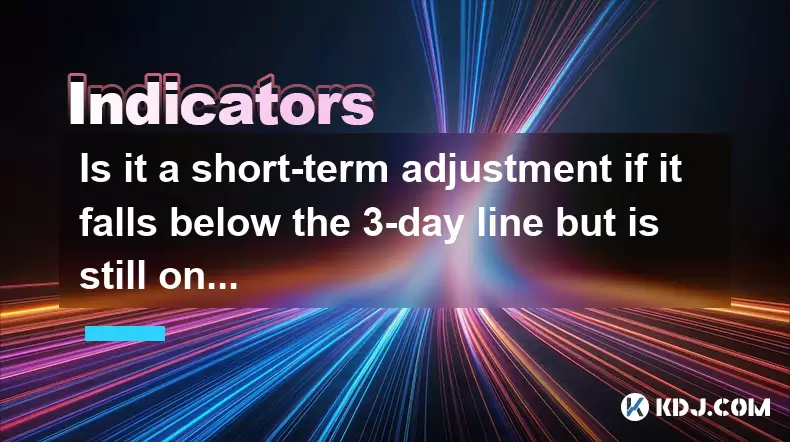
Is it a short-term adjustment if it falls below the 3-day line but is still on the 10-day line?
Jun 17,2025 at 04:07pm
Understanding the 3-Day and 10-Day Moving AveragesIn cryptocurrency trading, moving averages are essential tools for gauging trend strength and potential reversals. The 3-day moving average is a short-term indicator that reflects recent price action with minimal lag, making it highly sensitive to sudden market shifts. In contrast, the 10-day moving aver...
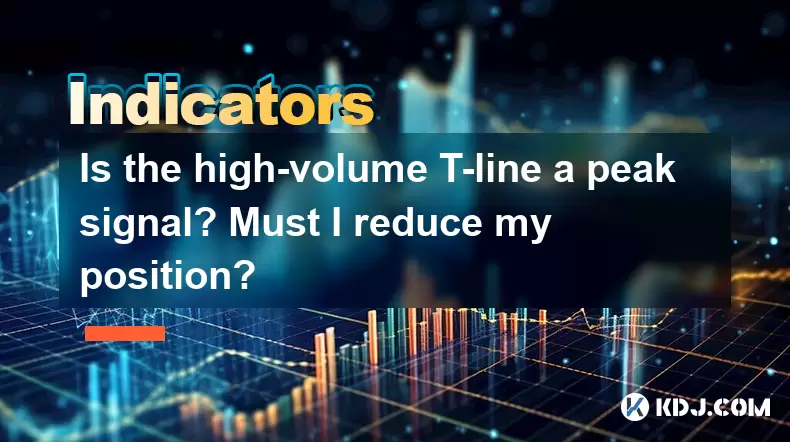
Is the high-volume T-line a peak signal? Must I reduce my position?
Jun 17,2025 at 06:07pm
Understanding the T-Line Pattern in Cryptocurrency TradingIn cryptocurrency trading, technical patterns are frequently used by traders to anticipate price movements. One such pattern is the T-line, which appears on candlestick charts and is characterized by a long upper or lower shadow with little or no body. A high-volume T-line occurs when this patter...
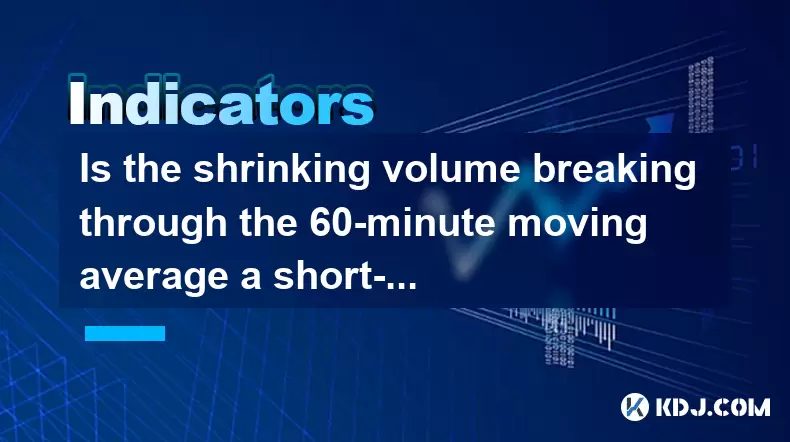
Is the shrinking volume breaking through the 60-minute moving average a short-term weakness? Should I run?
Jun 17,2025 at 06:21pm
Understanding the 60-Minute Moving Average in Cryptocurrency TradingIn cryptocurrency trading, the 60-minute moving average is a popular technical indicator used by traders to assess short-term trends. This metric calculates the average price of an asset over the last 60 minutes and updates with each passing minute. Traders often use it to identify pote...

Should I stop loss immediately when the 60-minute level has continuous top divergence?
Jun 17,2025 at 05:28pm
Understanding Top Divergence in the 60-Minute ChartIn cryptocurrency trading, top divergence refers to a technical signal where the price of an asset makes higher highs while the indicator (often RSI or MACD) makes lower lows. This is commonly interpreted as a sign of weakening momentum and potential reversal. When this occurs on the 60-minute chart, it...

Does the opening of the Bollinger band horn indicate the arrival of a big market?
Jun 17,2025 at 06:28pm
Understanding the Bollinger Bands and Their StructureBollinger Bands are a widely used technical analysis tool in the cryptocurrency market, developed by John Bollinger. They consist of three lines: a simple moving average (SMA), typically set at 20 periods, and two standard deviation bands above and below this SMA. These bands dynamically expand and co...

Is the high opening the next day after the low-level limit down the end of the wash?
Jun 17,2025 at 05:57pm
Understanding the Concept of a Limit Down and Its ImplicationsIn the world of cryptocurrency trading, a limit down refers to a situation where the price of a digital asset drops sharply, reaching its maximum allowable decline within a specific time frame. This mechanism is often seen on exchanges that implement daily price limits to prevent excessive vo...

Is it a short-term adjustment if it falls below the 3-day line but is still on the 10-day line?
Jun 17,2025 at 04:07pm
Understanding the 3-Day and 10-Day Moving AveragesIn cryptocurrency trading, moving averages are essential tools for gauging trend strength and potential reversals. The 3-day moving average is a short-term indicator that reflects recent price action with minimal lag, making it highly sensitive to sudden market shifts. In contrast, the 10-day moving aver...

Is the high-volume T-line a peak signal? Must I reduce my position?
Jun 17,2025 at 06:07pm
Understanding the T-Line Pattern in Cryptocurrency TradingIn cryptocurrency trading, technical patterns are frequently used by traders to anticipate price movements. One such pattern is the T-line, which appears on candlestick charts and is characterized by a long upper or lower shadow with little or no body. A high-volume T-line occurs when this patter...

Is the shrinking volume breaking through the 60-minute moving average a short-term weakness? Should I run?
Jun 17,2025 at 06:21pm
Understanding the 60-Minute Moving Average in Cryptocurrency TradingIn cryptocurrency trading, the 60-minute moving average is a popular technical indicator used by traders to assess short-term trends. This metric calculates the average price of an asset over the last 60 minutes and updates with each passing minute. Traders often use it to identify pote...
See all articles

























































































